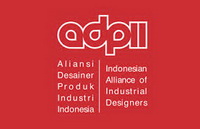Analisis prinsip desain sustainable fashion upcycle pada busana kasual
Abstract
The development of the fashion industry is influenced by rapid trend changes from time to time. This rapid change in trends ultimately gave rise to the fast fashion industry with the ready-to-wear concept, resulting in fashion products at low prices and produced in large quantities and quickly. This phenomenon has become a new problem in the fashion industry, namely the large amount of fashion waste produced, resulting in environmental pollution due to non-degradable waste. This problem can be overcome by starting education through fashion enthusiasts. The purpose of this study is to create casual clothing from upcycle results and evaluate it through aesthetic design principles. The method used is descriptive qualitative method. Data obtained through primary data and secondary data. Primary data was obtained from structured interviews with expert panelists while secondary data was obtained from the results of a literature review. The data obtained is then studied further to determine the aesthetic assessment of uocycle products based on design principles. The results obtained from this research are that all products created have implemented design principle indicators so that they meet the product indicators that have aesthetic value in the appearance of design principles.
Keywords
Full Text:
PDFReferences
G Kaikobad, N. K., Zafar, M., Bhuiyan, A., Zobaida, H. N., & Daizy, A. H. (2015). Sustainable and Ethical Fashion: The Environmental and Morality Issues. IOSR Journal of Humanities and Social Science (IOSR-JHSS, 20(8), 17. DOI: https://doi.org/10.9790/0837-20811722
Han, S., Tyler, D., & Apeagyei, P. (2015). Upcycling as a design strategy for product lifetime optimisation and societal change. in the Proceedings of the PLATE Conference 2015. Retrieved from https://e-space.mmu.ac.uk/id/eprint/605265
Kim, H. J. (2014). A Study of High Value-Added Upcycled Handbag Design for the Dubai Luxury Fashion Market. Jurnal Of the Korean Society of Fashion Design, 14, 173–188. Retrieved from https://www.ksfd.co.kr/neowiz/board/up_files/files_1/2014_vol14no1_11.pdf
Kozlowski, A., Bardecki, M., & Searcy, C. (2019). Tools for sustainable fashion design: An analysis of their fitness for purpose. Sustainability, 11(13), 3581. DOI: https://doi.org/10.3390/su11133581
Kulsum, U. (2020). Sustainable Fashion as The Early Awakening of the Clothing Industry Post Corona Pandemic. International Journal of Social Science and Business, 4(3), 422–429. Retrieved from https://ejournal.undiksha.ac.id/index.php/IJSSB/article/view/26438.
Leman, dkk, 2020, Dampak Fast Fashion Terhadap Lingkungan, Universitas Ciputra, Surabaya.
Leman, F. M., Soelityowati, J. P., & Purnomo, J. (2020). Dampak Fast fashion terhadap lingkungan. In Seminar Nasional Envisi 2020: Industri Kreatif. 128-136. Retrieved from https://www.ciputra.ac.id/envisi/wp-content/uploads/publikasifpd/ENVISIFPD-2020-P128-FIONA%20MAY%20LEMAN,%20SOELISTYOWATI,%20JENNIFER%20PURNOMO-DAMPAK%20FAST%20FASHION%20TERHADAP%20LINGKUNGAN.pdf
McDonough, W. Braungart, M. (2013). The Upcycle: Beyond Sustainability--Designing for Abundance (first edit). North Point Press.
Putrisuryyana, A.P.E. (2021). Analisis Faktor-Faktor yang Mempengaruhi Nilai Konsumen Terhadap Niat Beli: Studi Calon Konsumen Merek Lokal Kind Denim. Bachelor Thesis, Universitas Multimedia Nusantara. Retrieved from https://kc.umn.ac.id/id/eprint/16975/
Riyanto, Arifah. (2009). Desain Busana. Bandung: Yapemdo
Shafie, S., Kamis, A., & Firdaus, M. (2021). Fashion Sustainability: Benefits of Using Sustainable Practices in Producing Sustainable Fashion Designs. International Business Education Journal, 14(1), 103–11
Sumaryati, (2013). Dasar Desain II. Jakarta: KEMENDIKBUD
Sugiyono. (2005). Memahami Penelitian Kualitatif. Bandung: CV. Alfabeta.
Sugiyono (2015). Metode Penelitian Kombinasi (Mix Methods). Bandung: Alfabeta.
Qurratu’ayyun, A. (2019). Daya Terima Produk Upcycling Pakaian Wanita. Jakarta: Program Studi Pendidikan Vokasional Desain Fashion FT UNJ. Retrieved from http://lib.unj.ac.id/tugasakhir/index.php?p=show_detail&id=59177
Yuliarma. (2016). The Art of Embroidery Designs: Mendesain Motif Ragam Hias Bordir dan Sulaman. KPG (Kepustakaan Populer Gramedia).
DOI: https://doi.org/10.24821/productum.v7i1.10938
Refbacks
- There are currently no refbacks.
p-ISSN 2477-7900 | e-ISSN 2579-7328

This work is licensed under a Creative Commons Attribution 4.0 International License.
Like & Follow Us











